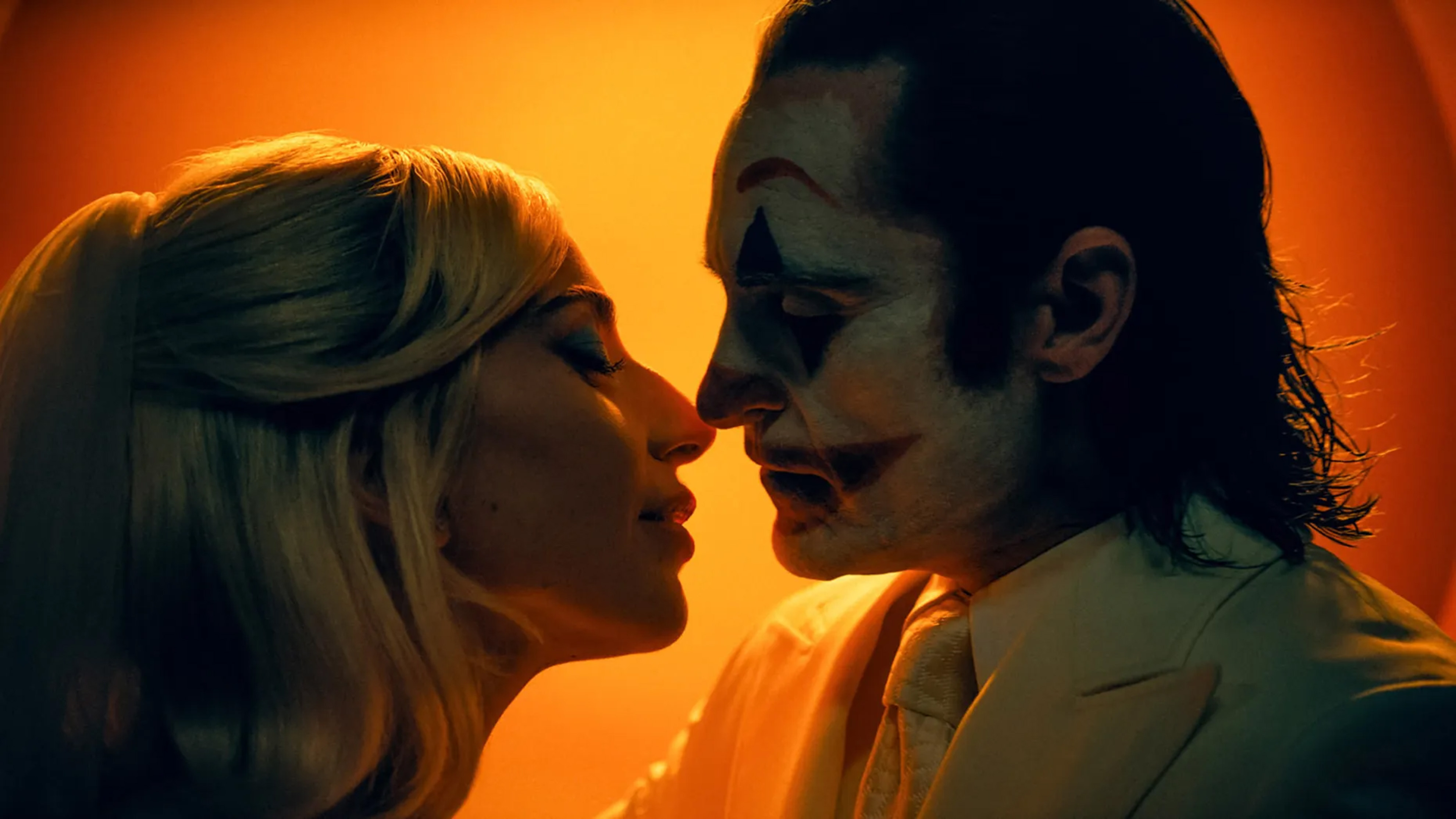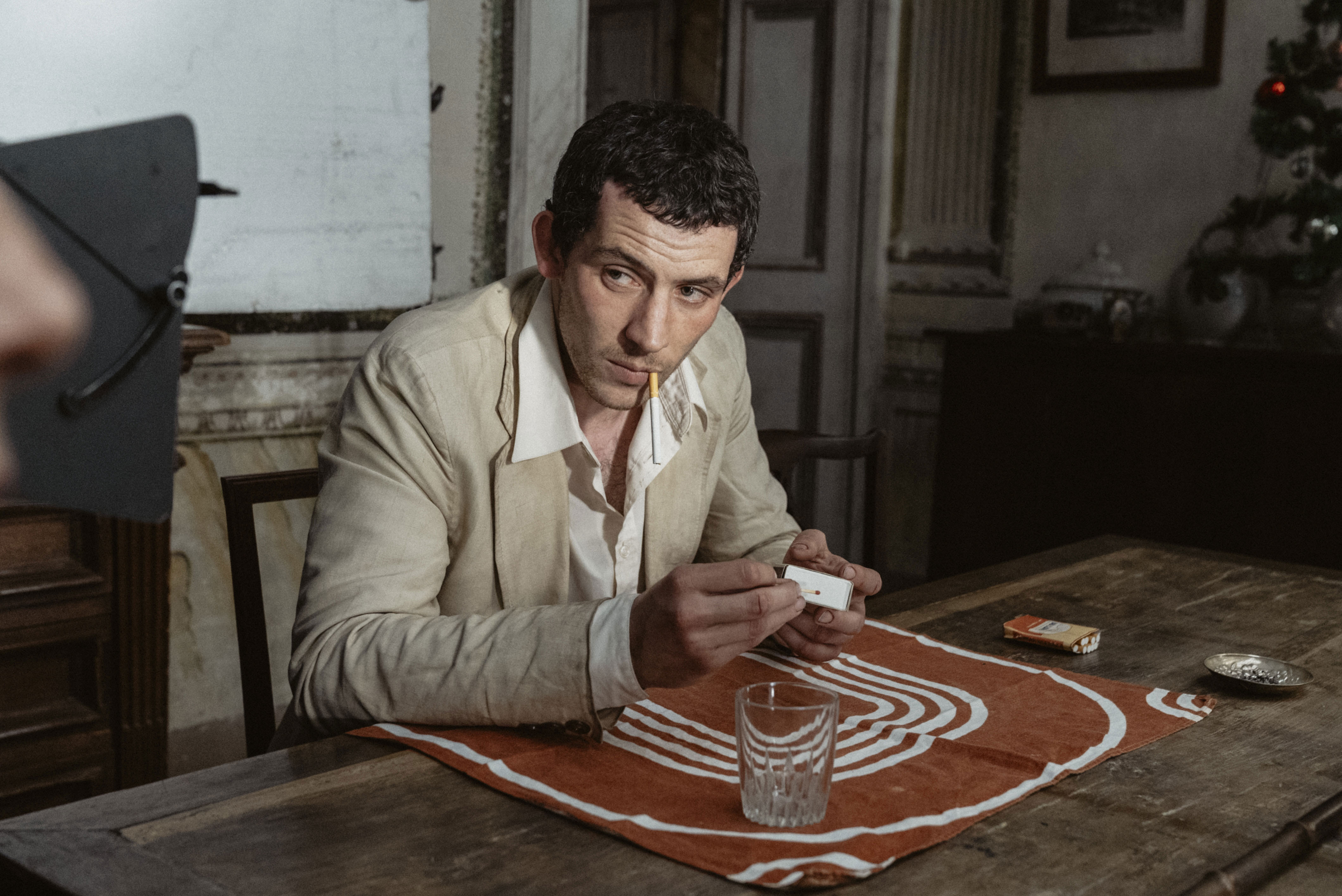Film review: ‘Joker: Folie à Deux’ reimagines classic characters, delivers haunting narrative

Joaquin Phoenix (right) returns to his Oscar-winning role of Arthur Fleck alongside Lady Gaga (left) as Lee Quinzel in “Joker: Folie à Deux.” Written and directed by Todd Phillips, the sequel hit theaters everywhere Oct. 4.
(Courtesy of Warner Bros. Pictures)
“Joker: Folie à Deux”
Directed by Todd Phillips
Warner Bros.
October 4

By Eric Sican
Oct. 4, 2024 3:23 p.m.
This post was updated Oct. 6 at 8 p.m.
Warning: spoilers ahead.
“Joker: Folie à Deux” is a dark, symphonic crescendo into madness, redefining chaos.
Slicing into theaters Friday, director Todd Phillips’ audacious sequel to his 2019 phenomenon, “Joker,” is a visceral exploration of love and madness. Set against a backdrop of an eerily vibrant Gotham and based on characters from the Batman franchise, the film unveils a tangled web of emotions as it reexamines the relationship between Arthur Fleck (Joaquin Phoenix) and Lee Quinzel (Lady Gaga), otherwise known as Harley Quinn. This film isn’t just a sequel – it’s a fever dream of obsession and artistry, culminating in a hauntingly beautiful narrative that dances between chaos and tenderness.
[Related: Film review: ‘Beetlejuice Beetlejuice’ follows the original with comedy and thrill]
In this follow-up, Phillips, known for his sharp storytelling and aesthetic bravado, dives deeper into the psychological landscape of the titular character. Gone are the straightforward crime drama tropes. Instead, “Joker: Folie à Deux” reimagines the genre as a lavishly surreal romantic tragedy. The film pulses with a rhythmic intensity, expertly weaving together jagged fragments of Arthur and Harley’s tumultuous relationship with striking visual flair. Each frame is meticulously crafted, with swirling colors and chilling shadows that echo the disarray of their minds.
With the clang of a haunting melody, “Joker: Folie à Deux” marks Gaga’s enthralling entrance as Harley Quinn. Infusing the character with a mix of vulnerability and ferocity, she distinctively navigates the character’s rollercoaster of emotions. The Grammy winner’s vocal prowess is on full display within the film’s musical numbers, transforming moments of madness into operatic highlights that amplify the film’s dark themes. Gaga’s Harley waltzes through the narrative, her flamboyant energy complementing Phoenix’s brooding portrayal of Arthur, whose descent into madness feels both poignant and terrifying.

(Courtesy of IMDb)
The chemistry between Phoenix and Gaga is electric, igniting every interaction with a palpable tension. Phoenix, reprising his Oscar-winning role with a nuanced blend of desperation and charisma, embodies Arthur’s struggle with mental illness, balancing moments of heart-wrenching vulnerability with unpredictable volatility.
Engaging with the desolate setting of Arkham Asylum, “Folie à Deux” harmoniously captures a cinematographic dissonance, blending elements of muted colors with moments of vibrancy. Opening with an animated short, the film seemingly taps into the psyche of its protagonist, intertwining realities with surreal imagery that reflects his inner turmoil.
Despite its awkward ease into musical numbers, the drama reconvenes itself with instances of authentic performances by Phoenix and Gaga. With reinterpretations of popular songs such as The Jam’s “That’s Entertainment” and Louis Armstrong’s “When You’re Smiling (The Whole World Smiles With You),” the film weaves a rich tapestry of emotion that transcends its initial clumsiness. These additions aid in the dichotomization of Lee and Arthur’s fantastical world – adding an element of dissimulation.
[Related: Film review: ‘Trap’ falls short of trapping audience until finale with unrealistic turns]
Amid its captivating narrative, the movie falls short in its pacing. The limited settings utilized in the film create an atmosphere that can sometimes come off as repetitive. Spending elongated time in simple tropes, “Folie à Deux” loses sight of its broader thematic ambitions, diluting the emotional impact of its central story. As a result, the film struggles to maintain the momentum necessary to fully engage its audience throughout the entirety of its two-hour runtime.
Regardless of its pacing flaws, the film features many standout moments that shine. Strong performances from secondary characters such as the guardsmen and the Joker’s fellow prisoners blanket the movie in a gritty authenticity that elevates the story, adding a coat of moral ambiguity that keeps viewers captivated. This interplay between powerful vignettes and a repetitive structure leaves audiences both drawn in and slightly frustrated, as they sense the potential for a more compelling portrayal of a fantastical slip into disarray.
In the final moments of “Joker: Folie à Deux” the film wrenches its heart from the mayhem, laying bare the raw essence of despair as Arthur bleeds out on the floor. Time slows, suspending each heartbeat in a tragic dance, echoing his earlier moments of manic joy. The anticipated catharsis gives way to a profound stillness, a haunting reminder of the cost of his madness. As he lies there, the stark closure alludes to a life woven with pain and fleeting moments of clarity.
Melancholically prepossessing, “Joker: Folie à Deux” has the last laugh.


